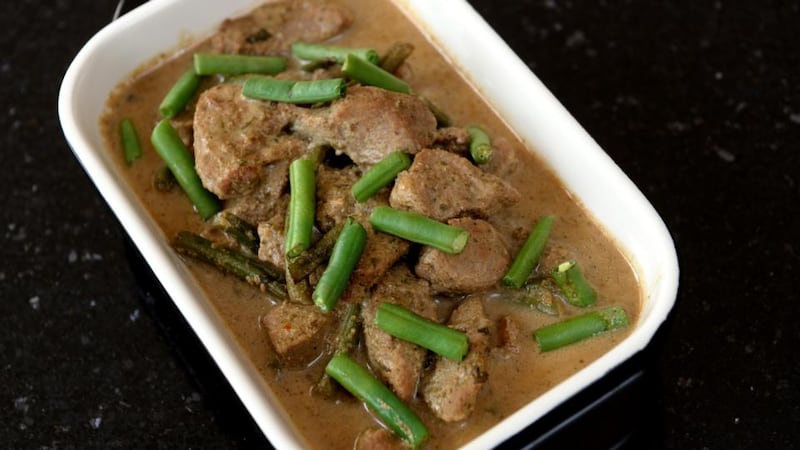Revered by those on the Paleolithic diets but shunned by vegetarians, red meat divides many. How the ingestion of red meat, such as beef, lamb and pork, might affect our health has been the subject of numerous studies, with conflicting results. It’s no wonder consumers are confused.
On the one hand, red meat offers myriad nutrients. It's rich in protein, is one of the best dietary sources of iron and is a good source of nutrients such as zinc and B vitamins. The negative was thought to be the saturated fat, which has been cited as the key culprit associated with raising cholesterol levels and causing cardiovascular disease. However, saturated fat levels vary with the cut of meat and, contrary to popular belief, lean red meat can be a low-fat food, with the balance of fats not dissimilar to that of chicken. Grass-fed beef is significantly lower in saturated fat and higher in CLA than intensively raised beef from feedlots. The potential anti-inflammatory benefit of this type of beef is the subject of Irish research, as it may play a role in protecting us against diabetes and heart disease.
Heart disease
Eating red meat has been found to increase the risk of death from heart disease, even when controlling for levels of fat and cholesterol. Researchers from the Cleveland Clinic in Ohio found that "red meat plus the wrong gut bacteria equals heart disease".
Their recent study published in the journal, Nature Medicine, looked beyond saturated fat and goes on to say that the offending amino acid may be L-carnitine. According to this study, eating red meat provides L-carnitine to bacteria that live in the human gut. These bacteria metabolise L-carnitine and turn it into a compound called trimethylamine-N-oxide (TMAO). In mice studies, TMAO has been shown to cause the accumulation of cholesterol in the arteries. Blocked arteries can lead to heart attack or stroke.

The study showed that a regular diet of meat probably encourages the growth of bacteria that can turn L-carnitine into TMAO. So is it best to avoid red meat?
Cardiologist Dariush Mozaffarian says the new research is well done and compelling, but it's too early to decide that this molecule, TMAO, causes atherosclerosis in humans.
We know that fish and chicken also contain L-carnitine, although much less than red meat. For this reason, TMAO needs to be studied more comprehensively in humans to understand the implications for health. The report published in Nature Medicine is important, but not conclusive. While the red meat-heart health connection is complex, we have some guidance and direction on the amount of red meat we should eat to minimise the risk of cancer.
Bowel cancer
Prof Martin Wiseman, medical and scientific adviser for the World Cancer Research Fund, says, "There is convincing evidence that red and processed meat increase the risk of bowel cancer. This is why we recommend limiting red meat to 500g cooked weight per week and avoiding processed meat. It is true that red meat contains valuable nutrients and this is why we do not recommend avoiding it altogether."
It is the processed meat that we should be most concerned about in our diets such as poor-quality sausages, corned beef, chorizo, pepperoni, salami, bacon and ham. These are more associated with a higher risk of colon cancer, so they should be avoided or at least limited.
So where does that leave us? Moderate consumption of lean grass-fed red meat as part of a balanced diet offers valuable protein and micronutrients. It’s unlikely to increase your risk of heart disease or colon cancer.
Moderate means about 500g or 1lb (cooked weight) of meat per week. The Food Safety Authority of Ireland advises having no more than two to three portions of red meat a week, a portion being about 70g. It's not about giving up red meat – it's about balance and variety to keep both your body and taste buds satisfied.
Today’s recipes were big hits in my house. In the tables below you will see the calories, saturates and salt contents. Salt levels climb when you season with salt or condiments such as soya and fish sauce so cut down on these if you have high blood pressure.
RECIPES
Irish Beef Cooked the Italian Way
This is a Jenny Bristow recipe, demonstrated at Bloom 2013. This works best when the meat is allowed to soak in the marinade for as long as possible. Ideally overnight.
Serves 6
Ingredients
450g minced steak
2 cloves of garlic, chopped
4 dessertsp balsamic vinegar
2 dessertsp honey
1 dessertsp olive oil
225g cherry tomatoes
110g black olives, stoned
150ml passata or tinned tomatoes
150ml red wine
Handful of basil or flat leaf parsley, chopped
Salt and freshly ground black pepper
Method
1. Leave the minced steak to marinate in the garlic, vinegar and honey for at least 30 minutes.
2. Drain the meat from the marinade and add to the hot oil in the pan. Cook over a high heat for 10-15 minutes until the meat becomes crispy and is almost cooked. Pour over the remainder of the marinade.
3. Add the tomatoes, black olives, passata and red wine to the pan. Simmer gently for four-five minutes until the sauce thickens. If you prefer more sauce, add a little more passata and red wine.
4. Finally, add the basil. Heat through, season, and serve. I like this dish served with crusty bread or with a mixture of oven roasted vegetables such as aubergines, peppers and courgettes.
Thai Pork with Coconut Sauce
This is a Rachel Allen recipe, with a twist. Add in your green beans or more veggies, such as sugar snap peas or peppers, towards the end of cooking for additional texture and to save on the washing up.
Serves 6
Ingredients
1kg pork fillet or pork pieces
2tbsp roughly chopped coriander with stalks
5 spring onions
1.5cm piece of fresh ginger
4 garlic cloves
Zest and juice of half a lemon or lime
1 red chilli, deseeded
1 stalk lemongrass
2 tbsp brown sugar
2 tbsp soya sauce
2 tbsp fish sauce
2 tbsp sesame oil
1 x 400ml tin low-fat coconut milk
300g runner beans
Method
1. If you have a pork fillet, cut it into diagonal slices about 1cm thick.
2. Make a marinade by adding all the ingredients apart from the coconut milk (and pork) into a food processor and whiz till you have a paste.
3. Place the pork in a dish and mix through the paste and leave to marinade for half an hour or even overnight. I have cooked this straight away though when I don't have time and it's still good.
4. Heat a frying pan with no oil and add the pork (keep any remaining marinade) in a single layer, or as close as you can to a single layer, for a minute or two each side until golden. Don't worry about the marinade getting all burned and sticky in the pan. When the pork is golden remove from the pan and keep warm.
5. Add 3/4 of the tin of coconut milk to the sticky pan and stir till all the marinade is mixed in. You can add in any remaining marinade from earlier. Let this thicken and simmer for five mins or so. You can cook some brown rice with the remaining coconut milk and water while the sauce is cooking.
6. Add the pork back onto the sauce and heat through for a few minutes. You may need to add a little lemon juice to season at this point. Throw in your vegetables near the end for extra bite.
7. Serve with rice and a little coriander on top.
Paula Mee is a dietitian and member of the INDI. E-mail pmee@medfit.ie or tweet @paulamarymee















